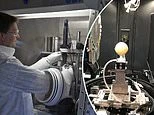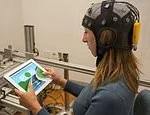Revolutionizing Air travel: The Potential of Vacuum Balloons
Scientists at Los Alamos National Laboratory in New Mexico have embarked on an ambitious project to develop a groundbreaking mode of air transportation: the ‘vacuum balloon’. This innovative technology has the potential to travel at speeds comparable to commercial airliners and could revolutionize the way in which humans are transported, deliveries are made, and surveillance is conducted.
The Concept of Vacuum Balloons
The concept of vacuum balloons involves the use of a hard shell to create a balloon that harnesses the power of vacuum to achieve buoyancy. Unlike traditional helium or hydrogen balloons, vacuum balloons could overcome the limitations of gradual loss of lift and hold the capability to carry objects in the air indefinitely.
Development and Potential Applications
Miles Beaux, a physicist leading the project, envisions a future where vacuum balloons could serve a multitude of purposes. He believes that these balloons have the potential to be utilized for human transportation, surveillance missions, and even as delivery Drones. The research team has been forming small, hollow spheres using a lightweight material called aerogel and experimenting with creating a solid ball lighter than the surrounding atmosphere to enable buoyancy.
The implications of this innovative technology extend to various industries. Companies such as amazon and Walmart, which have filed patents for floating warehouses and delivery drones, could benefit from the development of vacuum balloons. Additionally, the potential to conduct long-term scientific studies of weather, enable widespread cell network broadcasting, and enhance surveillance capabilities for security agencies could be realized through this technology.
The Scientific Progress and Challenges
Beaux’s team has made significant strides since the inception of the project in 2019, with a strong conviction that success is attainable. However, the current research status indicates that a couple of years may transpire before a functional vacuum balloon is successfully produced. The rigorous process of creating vessels with significantly less density than air is being undertaken, presenting both opportunities and hurdles in the pursuit of air buoyancy.
The physicist’s vision for vacuum balloons stemmed from the exceptional properties of aerogel, a material composed predominantly of empty space. The endeavor involves creating a shell comprised of aerogel and effectively removing the air from the inside, resulting in a structure less dense than the surrounding air. The team has conducted experiments with small-scale models and determined that larger spheres made from aerogel with reinforcing structures can achieve lift, paving the way for potential real-world applications.
Reviving an Age-Old Concept
While the pursuit of vacuum balloons may seem futuristic, the concept carries a historical legacy. In 1670, Francesco Lana de Terzi, an Italian Jesuit priest, proposed the idea of vacuum balloons made of copper as a means of achieving flight. Beaux’s contemporary research signifies a revival of this age-old vision, hinting at an intriguing prospect of integrating vacuum balloons into modern-day transport systems.
Implications for Air travel and Environmental Impact
The potential advent of vacuum balloons holds profound implications for the aviation industry and environmental sustainability. The scarcity of helium, a vital component in conventional dirigibles, poses a challenge for the air travel sector. With vacuum balloons offering a novel alternative, the detrimental environmental impact of helium production could be alleviated.
Additionally, the safety concerns surrounding the use of hydrogen in airships, exemplified by the Hindenburg disaster in 1937, underscore the need for innovative aerial Transport technologies. The proposed vacuum balloons, with their potential to offer long-term structural integrity and indefinite suspension in the atmosphere, present a promising solution to these challenges.
Commercial and Military Applications
The commercial and military applications of vacuum balloons are diverse and far-reaching. The concept of floating warehouses and delivery Drones, as envisioned by major corporations, aligns with the capabilities of vacuum balloons to remain suspended in the air for extended periods. Furthermore, the potential for surveillance, scientific research, and cellular network broadcasting underscores the multifaceted utility of this groundbreaking technology.
Beyond civilian applications, the implications for military reconnaissance and intelligence operations are noteworthy. The ability to deploy vacuum balloons for prolonged surveillance Missions, especially in remote or challenging terrains, could significantly enhance national security capabilities. The potential deployment of vacuum balloons in espionage and reconnaissance aligns with the evolving nature of modern military operations and intelligence gathering.
Addressing Technological Challenges and Realizing the Potential
Despite the scientific progress made in the development of vacuum balloons, several technological challenges and unanswered questions persist. The efficacy of propelling these balloons at speeds comparable to commercial airliners, combating atmospheric conditions, and ensuring long-term structural integrity are critical areas that warrant further research and development.
Additionally, the correlation between the spherical shape of vacuum balloons and reported sightings of unidentified aerial phenomena, including spherical or orb-shaped objects, raises intriguing questions. The intersection of advanced aerial technologies and the nature of these phenomena presents a compelling avenue for scientific inquiry and potential collaboration between aerospace researchers and the wider scientific community.
The Future of Air Transportation
As the research on vacuum balloons progresses, the potential for a paradigm shift in air transportation becomes increasingly apparent. From addressing the limitations of traditional helium and hydrogen balloons to redefining the scope of aerial surveillance and reconnaissance, the technology showcases a promising future. Collaborative efforts between research institutions, industries, and governmental agencies hold the key to unlocking the vast potential of vacuum balloons and shaping the future of air travel and exploration.
Source: dailymailuk








No Comments